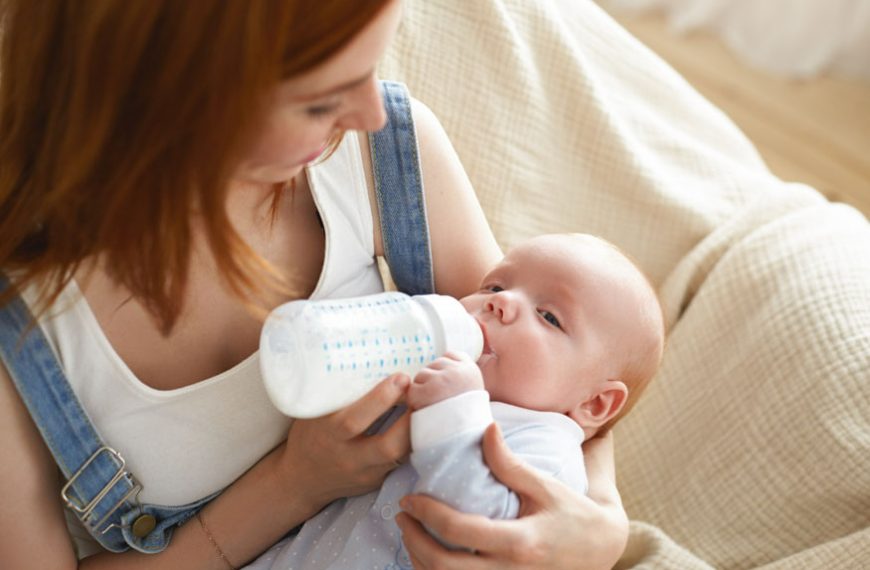Parenthood is a journey filled with joy, challenges and countless learning opportunities. One aspect of this journey that often requires careful consideration is feeding your baby. While breastfeeding is widely advocated for its numerous benefits, many parents choose or need to incorporate bottle-feeding into their routine. Enter the concept of paced bottle-feeding – a method that promotes a more natural and comfortable feeding experience for your little one.
Understanding Paced Bottle Feeding
Paced bottle-feeding is a feeding technique designed to mimic the flow and rhythm of breastfeeding. This method encourages a slower and more controlled pace, allowing the baby to take an active role in the feeding process. The key principle in how to pace bottle feed is to respond to the baby’s cues and avoid overfeeding, ultimately fostering a healthier and more enjoyable feeding experience.
Aspects of Paced Bottle Feeding
Let’s explore different aspects of pace feeding with bottle that you will need to consider while making the transition:
- Paced bottle-feeding mimics breastfeeding by holding the bottle horizontally, supporting oral motor skill development.
- Responsive feeding involves adjusting the pace based on the baby’s cues, promoting a healthier relationship with food.
- Upright positioning reduces the risk of ear infections and colic, giving the baby better control over milk flow.
- Frequent pauses allow the baby to self-regulate, creating a relaxed feeding experience.
- The best bottles for paced bottle feeding have a slow-flow nipple, which prevents the baby from adapting to faster flows and maintains a preference for breastfeeding.
Benefits of Paced Bottle-Feeding: Nourishing Body and Mind
Pace feeding with a bottle offers a plethora of benefits that extend beyond the immediate act of feeding. By embracing this thoughtful approach, parents can enhance their baby’s physical and emotional well-being in various ways:
- Respects Baby’s Cues
- Supports Development of Oral Motor Skills
- Reduces the Risk of Nipple Confusion
- Enhances Bonding Between Caregiver and Baby
- Promotes Optimal Digestion
- Encourages Independence
- Minimizes Overreliance on the Bottle
One of the primary advantages of paced bottle-feeding is its emphasis on responsiveness to the baby’s cues. This approach allows infants to regulate their own feeding, promoting a healthier relationship with food. By acknowledging signals of hunger or fullness, parents can prevent overfeeding and encourage self-regulation from an early age.
Paced bottle-feeding mirrors the natural movements required during breastfeeding, contributing to the development of essential oral motor skills. The gentle sucking and swallowing at the baby’s own pace help strengthen the muscles in the mouth and jaw, aiding in the overall development of oral coordination.
Paced bottle-feeding, with its focus on a slower milk flow and breastfeeding-like positioning, helps reduce the risk of nipple confusion. This is particularly beneficial for mothers who switch between breastfeeding and bottle-feeding, as the baby is less likely to develop a preference for one over the other.
The paced bottle-feeding method encourages a more intimate and connected feeding experience. The frequent pauses, eye contact and responsive interaction create a nurturing environment that strengthens the emotional bond between the caregiver and the baby. This shared moment fosters a sense of security and trust, essential for a child’s emotional development.
By allowing the baby to feed at their own pace, paced bottle-feeding reduces the likelihood of gulping or ingesting excessive air, which can contribute to digestive discomfort. The method supports optimal digestion and minimizes the risk of issues such as gas or colic, contributing to a more comfortable post-feeding experience for the baby.
Paced bottle-feeding empowers the baby to play an active role in the feeding process. This autonomy fosters a sense of independence and self-regulation, characteristics that are valuable as the child continues to grow and explore the world around them.
Traditional bottle-feeding with a rapid milk flow can sometimes lead to a preference for the bottle over breastfeeding. Paced bottle-feeding, with its focus on a more natural rhythm, helps strike a balance, minimizing the risk of the baby rejecting breastfeeding altogether and promoting a smooth transition between breast and bottle.
Common Challenges and Solutions in Paced Bottle-Feeding
Let’s address some common hurdles and offer practical solutions to ensure a smooth and enjoyable feeding experience for both you and your baby.
- Baby’s Resistance to a Slower Flow
- Difficulty Reading Babies’ Cues
- Transitioning from Breastfeeding to Bottle-Feeding
- Concerns About Baby’s Weight Gain
- Pressure to Finish the Bottle
- Difficulty Maintaining Paced Bottle-Feeding in Public
- Finding the Right Bottle and Nipple
Challenge: Some babies may initially resist the slower flow of paced bottle-feeding, especially if they are accustomed to faster flows from traditional bottle-feeding.
Solution: Gradually introduce paced bottle-feeding by starting with shorter sessions and allowing your baby time to adjust. Experiment with different nipple sizes to find one that your baby is comfortable with, ensuring a balance between a natural pace and their feeding preferences.
Challenge:It can be challenging for parents to interpret their baby’s cues, leading to uncertainties about whether the baby is hungry or full.
Solution: Pay close attention to your baby’s signals, such as turning away, slowing down, or losing interest in the bottle. Pause during feeding to gauge their response. Over time, you’ll become more attuned to your baby’s cues, building a stronger connection and understanding of their needs.
Challenge: Transitioning between breastfeeding and paced bottle-feeding may pose difficulties, particularly if the baby shows a preference for one method over the other.
Solution: Be patient and consistent in your approach. Introduce the bottle gradually, allowing the baby to associate it with positive experiences. Use breast-like nipples and maintain skin-to-skin contact during bottle-feeding to bridge the gap between the two methods, reducing the likelihood of nipple confusion.
Challenge: Parents may worry that paced bottle-feeding could impact the baby’s weight gain, especially if the feeding sessions seem shorter than traditional bottle-feeding.
Solution: Trust your baby’s ability to self-regulate. Paced bottle-feeding does not necessarily result in shorter feeding times; rather, it allows the baby to consume the appropriate amount at their own pace. Monitor your baby’s weight gain through regular check-ups with the pediatrician to ensure they are thriving and meeting developmental milestones.
Challenge: Well-meaning caregivers may unintentionally exert pressure to finish the bottle quickly, contrary to the principles of paced bottle-feeding.
Solution: Communicate the importance of paced bottle-feeding to anyone involved in feeding your baby. Educate them on the signs of satiety and the benefits of allowing the baby to dictate the pace. This ensures a consistent approach and minimizes external pressures during feeding sessions.
Challenge: It might be challenging to maintain the principles of paced bottle-feeding when feeding in public or on the go.
Solution: Plan ahead by preparing bottles with the appropriate milk temperature, and bring along any comfort items your baby associates with feeding. Find a quiet, comfortable space when possible, and communicate your preferences to those around you. Remember, the goal is to create a positive and nurturing feeding experience for your baby, regardless of the setting.
Challenge: Selecting the right bottle and nipple for paced bottle-feeding can be overwhelming due to the wide variety of options available.
Solution: Experiment with different bottles and nipples to find what works best for your baby. Look for bottles designed to mimic the breast, with slow-flow nipples that encourage a natural feeding pace. Consider consulting with other parents or seeking recommendations from healthcare professionals for guidance.
Paced bottle-feeding transcends the realm of a mere feeding technique; it’s a comprehensive approach to cultivating your baby’s physical and emotional well-being. At EuroKids, we recognize the significance of nurturing not only a child’s physical growth but also their emotional and cognitive facets. Paced bottle-feeding is an integral part of our commitment to providing a nurturing and supportive environment, as it mirrors our belief in fostering natural and mindful approaches that contribute to the overall well-being and happiness of each child in our care.
















